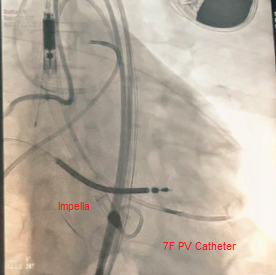Mechanical Circulatory Support
By using PV loop hemodynamics as a feedback mechanism, one can optimize a patient’s hemodynamic state resulting from acute or long-term mechanical circulatory support. Quantitative measures of ventricular energetics, systolic/diastolic function, and dyssynchrony provide a comprehensive assessment of hemodynamic function tailored specifically to that patient.
This video showcases left ventricular unloading caused by an intra-aortic balloon pump (IABP); Left ventricular PV loops begin at a “baseline” state, with the IABP being turned on at (0:09).
This video showcases left ventricular unloading by a percutaneous left ventricular assist device (pVAD).

Related publications:
- 2020; New Insights into RV Function among patients with LVAD: PV Loop Analysis: https://www.sciencedirect.com/science/article/pii/S1053249819300324
- 2020; PV Loop Analysis of LV Unloading by a Percutaneous Transvalvular Pump: https://www.ahajournals.org/doi/10.1161/CIRCHEARTFAILURE.119.006788
- 2017; Acute Circulatory Support in MI and Shock: https://www.sciencedirect.com/science/article/pii/S0019483217300081
- 2004; Beat-to-Beat Effects of Intra-Aortic Balloon Pump: https://pubmed.ncbi.nlm.nih.gov/15734398/
